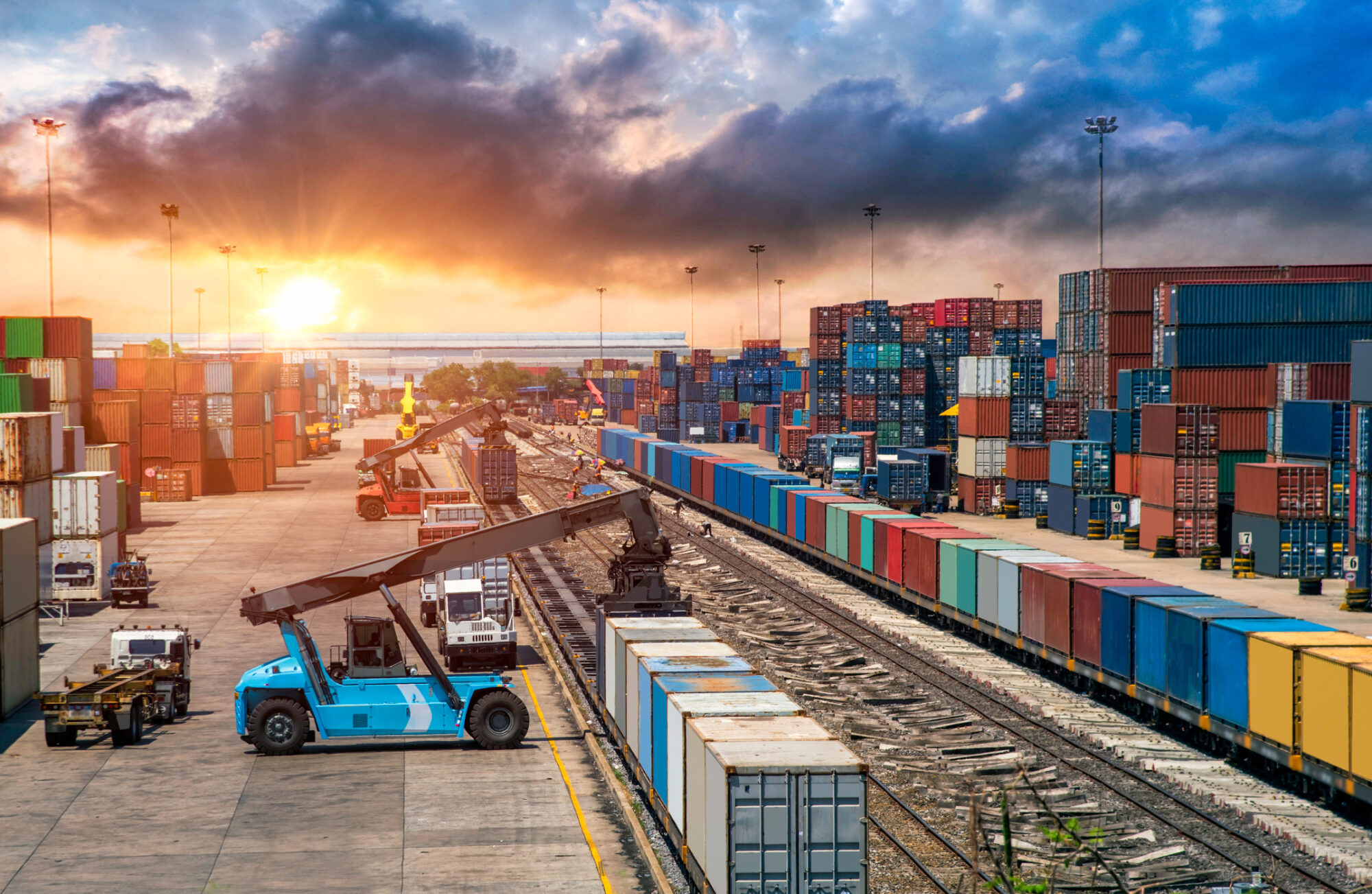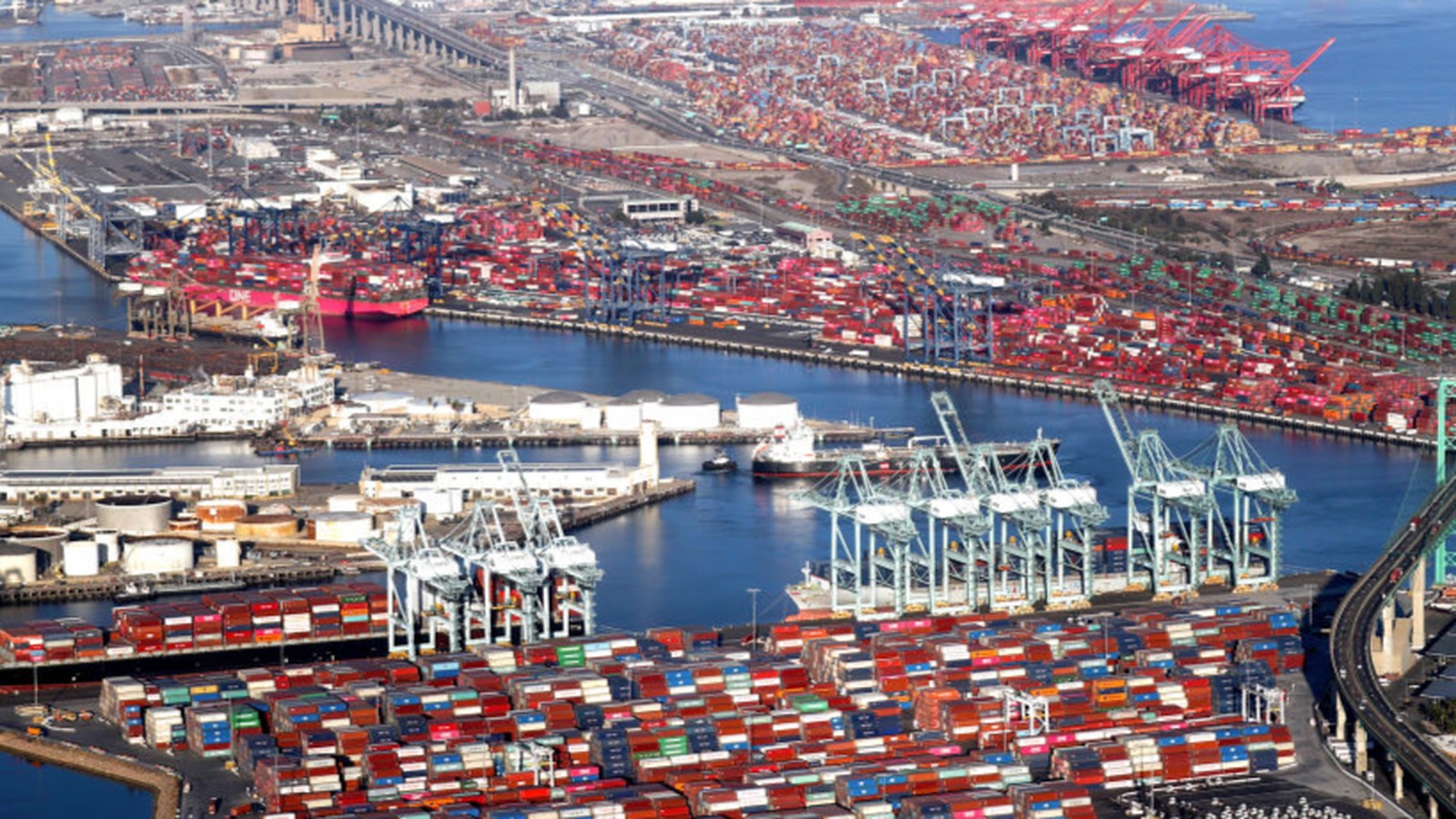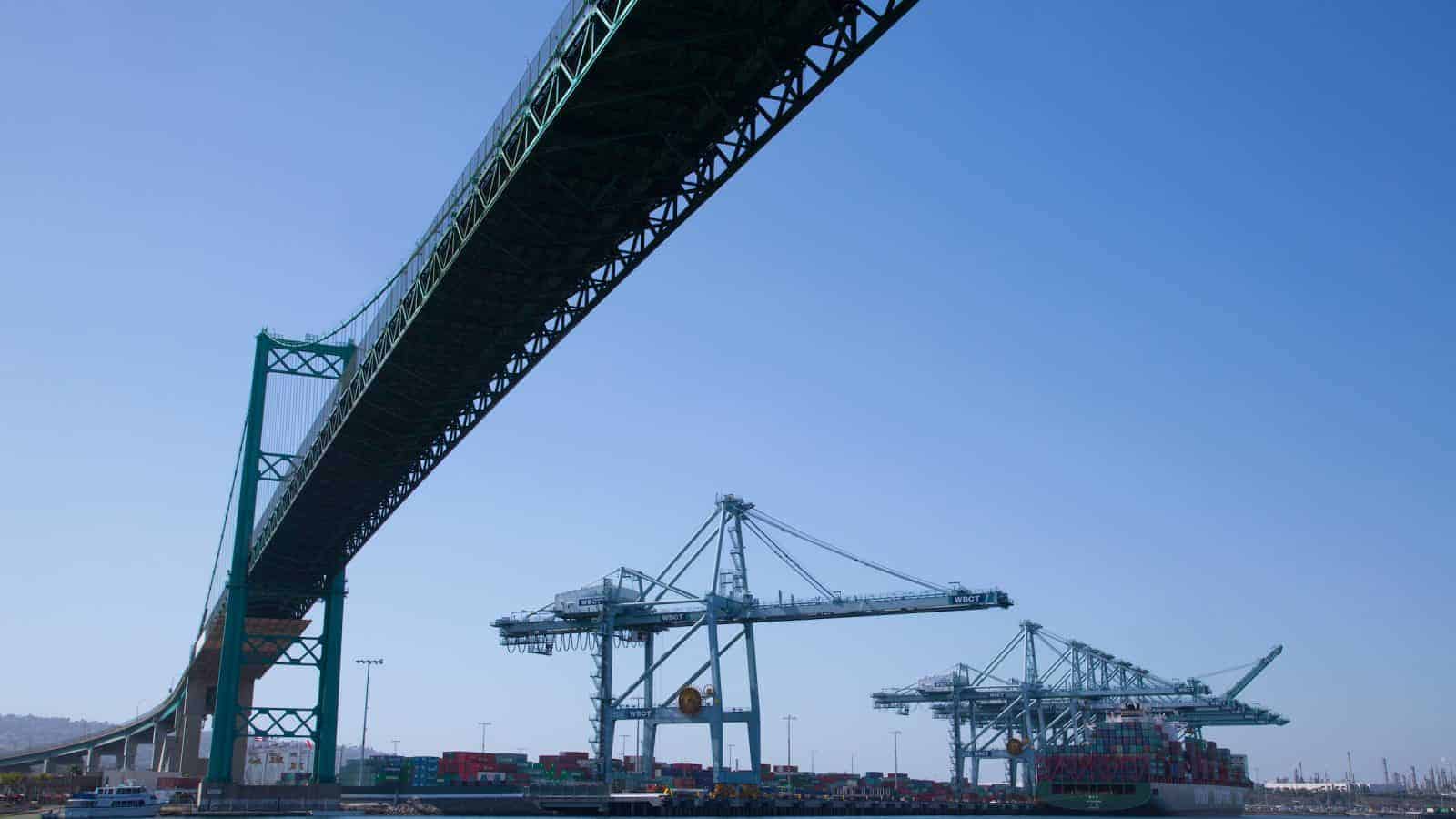Congress Fails to Advance Manufacturing Tax Priorities
Bipartisan Provisions Like R&D Incentives Are Critical to Small Manufacturers’ Ability to Invest
Washington, D.C. – The National Association of Manufacturers is calling on lawmakers to immediately address critical tax provisions that were left out of the 2023 Omnibus spending package, highlighting the negative impact to small manufacturers and their workers.
“Congress’ failure to reverse tax policies that make it more costly to perform research, buy machinery and finance job-creating investments has put hundreds of thousands of American jobs and manufacturing competitiveness at risk. Despite overwhelming support for addressing these issues, Congress’ inaction will now undercut small manufacturers’ ability to invest in their workers, facilities and communities,” said NAM President and CEO Jay Timmons.
Ketchie President and Owner and Incoming Chair of the NAM Small and Medium Manufacturers Group Courtney Silver recently highlighted that congressional action on these tax priorities will help prevent small manufacturers from feeling “stuck between a rock and a hard place. It’s very important that we take action on expanding and locking in that pass-through deduction, increasing those incentives around R&D and protecting those provisions around full expensing and interest deductibility,” said Silver.
“Although the appropriations package included important manufacturing priorities, including the INFORM Consumers Act, with its protections for consumers against counterfeit goods, and the Electoral Count Reform Act, which supports a clear and secure democratic process, pro-competitiveness tax policy changes would have made a big difference for businesses of all sizes across our industry,” continued Timmons. “As the next Congress convenes, we urge lawmakers to prioritize these policies, and we will continue to work with manufacturing champions from both parties to provide tax certainty to the nearly 13 million people who work in manufacturing today.”
Read more about how these critical tax priorities impact small manufacturers across the country here.
-NAM-
The National Association of Manufacturers is the largest manufacturing association in the United States, representing small and large manufacturers in every industrial sector and in all 50 states. Manufacturing employs more than 12.9 million men and women, contributes $2.77 trillion to the U.S. economy annually and accounts for 55% of private-sector research and development. The NAM is the powerful voice of the manufacturing community and the leading advocate for a policy agenda that helps manufacturers compete in the global economy and create jobs across the United States. For more information about the NAM or to follow us on Twitter and Facebook, please visit www.nam.org.
Manufacturers: Permitting Reform Essential to Manufacturing Growth and Competitiveness
Washington, D.C. – Following consideration today of a permitting amendment in the U.S. Senate, National Association of Manufacturers President and CEO Jay Timmons released the following statement:
“Red tape and permitting delays have plagued the manufacturing industry for decades, and the need for reform has only grown more urgent in recent years. Manufacturers have long called for Congress to repair the broken permitting process to minimize delays and reduce needless litigation that stands in the way of energy and resources projects and other investments. That will ensure we can get to work quickly on the investments that the bipartisan infrastructure law and the CHIPS and Science Act make possible. It will also ensure manufacturers have access to reliable and affordable energy while the grid evolves and as we work to improve air quality and reduce greenhouse gases.
“Ultimately, permitting reform effects every part of the American supply chain—from modernizing energy projects to building new manufacturing facilities. Today’s Senate vote, while unsuccessful, should serve as a step toward true bipartisan reform. Manufacturers appreciate the efforts of Sens. Joe Manchin and Shelley Moore Capito to push this priority forward, and we will continue to work with both chambers to achieve this goal.”
-NAM-
The National Association of Manufacturers is the largest manufacturing association in the United States, representing small and large manufacturers in every industrial sector and in all 50 states. Manufacturing employs more than 12.9 million men and women, contributes $2.77 trillion to the U.S. economy annually and accounts for 55% of private-sector research and development. The NAM is the powerful voice of the manufacturing community and the leading advocate for a policy agenda that helps manufacturers compete in the global economy and create jobs across the United States. For more information about the NAM or to follow us on Twitter and Facebook, please visit www.nam.org.
Manufacturers: President Biden and Congress Have Averted a Holiday Crisis
Washington, D.C. – National Association of Manufacturers President and CEO Jay Timmons released the following statement after President Biden signed H.J. Res. 100 into law, concluding the collective bargaining process between Class I railroads and all labor unions representing the freight rail workforce and eliminating the threat of a disastrous rail strike.
“Thanks to swift action from President Biden and his administration, and bipartisan cooperation in Congress, a holiday supply chain disaster has been averted.
“Earlier this year, manufacturers called for and supported the creation of the Presidential Emergency Board to rectify the stalemate between the unions and railways. But when it became clear they wouldn’t reach a negotiated resolution, we called on Congress to act, as a freight rail shutdown would have been devastating to the manufacturing industry, the U.S. economy and all American families.
“We thank President Biden, Secretaries Walsh and Buttigieg as well as manufacturing allies in Congress for listening to our industry and working quickly to avert this crisis.”
-NAM-
The National Association of Manufacturers is the largest manufacturing association in the United States, representing small and large manufacturers in every industrial sector and in all 50 states. Manufacturing employs more than 12.9 million men and women, contributes $2.77 trillion to the U.S. economy annually and has the largest economic multiplier of any major sector and accounts for 58% of private-sector research and development. The NAM is the powerful voice of the manufacturing community and the leading advocate for a policy agenda that helps manufacturers compete in the global economy and create jobs across the United States. For more information about the NAM or to follow us on Twitter and Facebook, please visit www.nam.org
Rail Unions Move Closer to National Strike

Another large labor union has voted to reject the rail deal brokered in part by the Biden administration, moving the industry closer to a strike, according to CNBC.
Split decision: Two of the largest railroad labor unions in the United States went separate ways during their contract ratification votes, which were announced on Monday. The Sheet Metal, Air, Rail and Transportation Workers – Transportation Division voted against the proposed agreement by a slim margin, while the Brotherhood of Locomotive Engineers and Trainmen voted to ratify it.
What it means: This latest action raises the likelihood of a rail work stoppage in early December. In total, 8 of 12 unions have now ratified the tentative agreement concluded in September while the rank-and-file membership of 4 unions have rejected it.
- Should one union choose to go on strike, the broad impact would cripple the national freight rail network.
The impact: The railroad industry and major shipping groups have found that a strike would likely cost around $2 billion per day, also according to CNBC. It would affect every major rail operator.
- “The American Chemistry Council, which represents companies including 3M, Dow, Dupont, BP, Exxon Mobil and Eli Lilly, said a rail strike would impact approximately $2.8 billion in chemicals cargo a week, and lead to a GDP decline and renewed inflation.”
- “Other industries, from agriculture to retail, have warned of the economic risks of a strike.”
Next steps: Negotiations will continue through a cooling-off period that runs until early December. If a deal is not reached by 12:01 a.m. EST on Dec. 5, a strike could occur. The NAM and others have urged Congress to take action under the Railway Labor Act and pass legislation that would avert a strike if railroads and rail unions cannot reach such a deal.
What we’re saying: “Manufacturers are disheartened by today’s news on the further unraveling of rail negotiations,” said NAM President and CEO Jay Timmons. “It’s clear that Congress, both Democrats and Republicans, must be prepared to work together immediately to avert a rail strike and prevent further damage to our supply chain.”
The NAM Outlines Post-Election Priorities

Though some midterm races remain uncalled, the NAM is preparing the next phase of its competitiveness agenda. Last Thursday, it offered members a breakdown of the election results so far and what they mean for manufacturing policies and priorities in the United States.
The briefing: Hosted by NAM Vice President of Government Relations Jordan Stoick, the conversation provided members with an overview of the NAM’s key issue areas, presented by several of the NAM’s policy experts.
- Tax: According to NAM Managing Vice President of Tax and Domestic Economic Policy Chris Netram, the NAM is pushing Congress to approve key tax incentives for manufacturers in a year-end package, including the reversal of a harmful change in the treatment of R&D expenses that took effect earlier this year and an extension of 100% bonus depreciation. Beyond the lame-duck session, the NAM will be fighting to make tax reform permanent, he added.
- Trade: According to NAM Vice President of International Economic Affairs Policy Ken Monahan, the NAM will be advocating reauthorization of the Miscellaneous Tariff Bill. Going forward, priorities will include guarding against the TRIPS waiver at the World Trade Organization (which would harm manufacturers’ intellectual property rights), defusing regulatory and market access challenges in Mexico and promoting a robust market-opening agenda overall.
- Energy: NAM Vice President of Energy and Resources Policy Rachel Jones said energy security is likely to remain a key focus of policymakers. She highlighted permitting reform as a possible area for bipartisan progress and noted that implementation of new climate incentives and programs will likely come with heightened oversight from the new Congress next year.
- Infrastructure: NAM Vice President of Infrastructure, Innovation and Human Resources Policy Robyn Boerstling noted that supply chain challenges are the most difficult issue facing manufacturers at the moment. She also provided an update on rail negotiations, addressed the National Labor Relations Board’s robust pro-labor agenda and spoke out in favor of the NAM’s commonsense immigration approach, among other issues.
The outlook: “The good news is that regardless of the outcome, the NAM remains uniquely positioned to continue to effectively advocate on your behalf with the Biden administration and with both parties, whoever’s in control on Capitol Hill,” said Stoick.
- “We’ve worked successfully with the administration and the current Congress over the past two years to achieve important policy wins on things like infrastructure and the CHIPS semiconductor and competition bill. And we’ve been successful at pushing back on harmful policies and overreach, including stopping what should be considered some of the worst parts of the tax increases that were proposed over the past two years.”
Manufacturers Urge Swift Resolution to Ongoing Rail Negotiations
Washington, D.C. – National Association of Manufacturers President and CEO Jay Timmons released the following statement as negotiators work to reach an agreement between Class I railroads and all labor unions representing the freight rail workforce. Several organizations have not yet ratified the deal tentatively agreed to by union leadership and rail industry representatives in September that delayed the possibility of a strike.
“Manufacturers are urging congressional leaders to be prepared to bring stability and predictability to the economy if a rail strike and shutdown occurs. We already face economic turmoil with rising costs, product shortages and high inflation. Any nationwide rail strike or shutdown will cause even more economic pain. Manufacturers urge all parties to work rapidly—for the good of the country—to conclude this collective bargaining process.”
Background: A rail strike could begin as soon as 12:01 a.m. EST on Saturday, Nov. 19. Currently, the majority of the unions representing the rail workers have agreed to extend that deadline to Friday, Dec. 9, though a unanimous decision to maintain the status quo is required for that extension.
On Thursday, Oct. 27, the NAM joined hundreds of other associations in calling on President Biden to ensure a swift resolution and reiterating support for the work of the Presidential Emergency Board, which has aided in the talks.
Currently, the American freight rail network accounts for nearly 40% of total freight volume, and a strike or delay in finalizing a long-term contract would have devastating impacts across surface supply chain networks and economic output.
-NAM-
The National Association of Manufacturers is the largest manufacturing association in the United States, representing small and large manufacturers in every industrial sector and in all 50 states. Manufacturing employs more than 12.9 million men and women, contributes $2.77 trillion to the U.S. economy annually and has the largest economic multiplier of any major sector and accounts for 58% of private-sector research and development. The NAM is the powerful voice of the manufacturing community and the leading advocate for a policy agenda that helps manufacturers compete in the global economy and create jobs across the United States. For more information about the NAM or to follow us on Twitter and Facebook, please visit www.nam.org.
What’s Up With the Rail Negotiations?

With the possibility of a national rail strike looming in the near future, the NAM is working with association members, congressional leadership and the White House to urge all parties toward a final resolution. On Monday, the NAM held a members-only briefing with remarks from senior leadership of the Association of American Railroads and personnel involved in the ongoing collective bargaining process.
- NAM members in attendance had the opportunity to hear about the state of play directly from representatives of the rail industry, and the message was consistent with the NAM’s own: that the situation is critical, and that a lack of an agreement would be devastating for railroads, for manufacturers and for the wider U.S. economy.
The background: For nearly three years, railroads and their unions have been discussing the outlines of a new long-term contract.
- Two months ago, U.S. Class I railroads and the various labor unions composing the rail workforce agreed to a deal brokered in part through efforts led by the Biden administration that temporarily averted a strike, pending ratification votes by each union’s rank-and-file membership.
- Although more than half of the unions involved have now ratified the agreement, at least two unions have voted to reject it—raising the likelihood of a strike.
The situation: Seven unions have ratified the proposed agreement, two have rejected the deal, and three have yet to vote. As it stands now, the hard deadline for unanimous agreement by all unions is 12:01 a.m. on Saturday, Nov. 19, at which point a strike could be called.
The outlook: During the NAM’s event, the speakers acknowledged that Class I freight rail companies will have to begin making decisions about possible disruptions and metering rail service as soon as this weekend.
- Leading up to the Nov. 19 deadline, manufacturers may receive notifications that some products cannot be moved on certain rail lines.
Next steps: It will be critical for stakeholders to press Congress and the administration either to work with unions to extend the Nov. 19 deadline, or to intervene with legislation that puts in place an agreement like the one recommended in September by the Presidential Emergency Board.
What we’re saying: “Manufacturers are urging congressional leaders to be prepared to bring stability and predictability to the economy if a rail strike and shutdown occurs,” NAM President and CEO Jay Timmons said today.
- “We already face economic turmoil with rising costs, product shortages and high inflation. Any nationwide rail strike or shutdown will cause even more economic pain. Manufacturers urge all parties to work rapidly—for the good of the country—to conclude this collective bargaining process.”
NAM Guides Treasury, IRS on Climate Incentives

The Treasury Department and the IRS can help the U.S. meet its climate goals—if both agencies “can leverage private sector ingenuity, expertise and capital” both transparently and inclusively, the NAM told Treasury late last week.
What’s going on: This year’s reconciliation legislation contains advanced manufacturing, clean energy and climate incentives to invest $369 billion in actions that will address climate change, including $270 billion via direct tax incentives.
- These measures can be successful if “Treasury and the IRS quickly address the critical details of how each of these incentives will work in tandem with clean energy and advanced manufacturing projects that have already begun and those that have yet to be conceived,” NAM Vice President of Energy and Resources Policy Rachel Jones told the agencies.
- Treasury must also work to ensure the incentives are used “in a way that quickly brings new private capital to bear” while keeping projects on schedule.
Manufacturers’ input needed: Engagement with manufacturers should help the agencies develop their rulemaking, Jones said.
- “To meet our shared goals, including achieving meaningful emissions reductions, Treasury and the IRS should maintain an open line of communication with the NAM’s members of all sizes and sectors,” she said.
- “Without thoughtful engagement with manufacturers, the clean energy and climate incentives could have the opposite of intended results, and in some cases projects could stall, communities will face further disappointment, energy security will be jeopardized and climate goals will go unmet.”
What’s not needed: “It would be shortsighted to implement guidance and rules that exclude or indirectly penalize manufacturers that are already making significant capital investments in clean energy projects,” Jones said.
Teamwork—and plain language: The NAM also urged Treasury and the IRS to make clear their definitions and qualifications when it comes to clean energy and climate tax credits.
- Jones recommended cooperation across the “entire federal family” to combat climate change—from the Nuclear Regulatory Commission to the Department of Defense to the Federal Energy Regulatory Commission and many more.
NAM about town … The NAM participated in a Treasury roundtable yesterday where it shared the specific concerns and constructive input from manufacturers more directly.
“Manufacturing on the Moon”: The Next Lunar Vehicle

When astronauts return to the surface of the moon in 2025, they will find a car waiting to pick them up. The new lunar mobility vehicle, designed and built by Lockheed Martin and GM with tires by Goodyear, will be sent up prior to the humans—but more excitingly, it will stay there long after they leave. In fact, the vehicle will remain on the moon for many years, performing experiments and fulfilling commercial contracts autonomously in between NASA missions.
We were delighted to learn all this and more in a recent interview with Kirk Shireman, Lockheed Martin’s vice president for the Lunar Exploration Campaign, who told us all about the astonishing technology involved. Here’s what we learned about the vehicle, which will be the first on the moon since 1972. Though those rovers were the “finest technology” of their day, as Shireman says, the new lunar vehicle is certainly the finest of ours.
The new design: To withstand the moon’s environment for years on end, the vehicle will require state-of-the-art components and materials. The companies are still in the “materials selection phase,” says Shireman, but he did share several of the broad requirements.
- The vehicle will use the latest in battery technology, allowing it to power down almost completely during the long, frigid lunar night (which, like a lunar day, lasts for 14 Earth days). Temperatures will range from -280 degrees Fahrenheit at night to 260 degrees Fahrenheit during the day.
- Not only must the materials hold up under the temperature shifts, which occur very rapidly, they must also withstand the sharp, abrasive electrostatic dust that “clings to everything,” says Shireman.
- In addition, the vehicle must be light—it’s tough to transport things to the lunar surface, and every ounce counts.
- And last, safety is of course paramount; the vehicle must be easy to enter and exit for the astronauts. The vehicle’s speed will top out at about 12 mph, also for safety reasons.
Testing: The moon has only one-sixth of the Earth’s gravity, and it’s pretty much impossible to simulate driving in such conditions while here on Earth. The engineers must rely on virtual reality as well as some physical tests, Shireman explains.
- GM’s “driver in the loop” simulator fulfills this function, allowing engineers to “drive” in the environment and gravity of the moon. (Shireman, who recently tried out the simulator, tells us that it is extremely challenging.)
- However, physical testing does have some important uses. Just like any other autonomous vehicle, the lunar vehicle must be tested to ensure it “can’t get into a place it can’t get out of,” as Shireman puts it—and that can be done in Earth’s gravity.
- Engineers will also perform other physical tests on the materials, including lighting tests to ensure the vehicle’s sensors can cope with the blinding light on the moon, where everything looks either white or black.
Advanced manufacturing . . . for the moon: Once the vehicle is on the moon, Lockheed Martin and GM will face a challenge very familiar to other manufacturers: deciding how to collect, organize and transmit data from their equipment.
- The vehicle will monitor its own performance and the lunar environment via a host of sensors. It can also physically carry other instruments for experimentation, says Shireman.
- However, the lunar program will “have more data than pipe” (i.e., the means of returning data to Earth) and will need to prioritize how much and how frequently it transmits information.
- And unlike manufacturers communicating with their equipment on Earth, the engineers will have to cope with delays in response time, which could take several seconds or longer, says Shireman. If the rover is located on the back side of the moon, the signal must go through a relay satellite before reaching Earth.
No garage: Out of curiosity, we asked Shireman an earthling’s question: will the lunar vehicle have some sort of garage where it can seek protection from the cold or sun?
- The answer to that is no—it will simply park itself wherever it happens to be to wait out the night. It’s “much more useful if you can avoid going back anywhere,” says Shireman, because that means the vehicle is not tied down to one spot.
- Even though it would be nice to be able to park it in a garage, which would keep the vehicle warm, the tradeoff is not worth it, he explains.
Moon activities: The lunar missions will have tremendous scientific value, not least because these vehicles can roam widely and produce granular maps of the moon’s landscape. However, they are designed for commercial applications as well.
- The companies are still exploring their options, Shireman says, but these may include transporting commercial lunar payloads and helping other companies (and countries) explore the moon’s resources.
- Then there is the “coolness” factor—people might pay just to interact with this technology, for example by driving the rover telerobotically from Earth. (Sounds like fun!)
The last word: As Shireman says, the rover itself is the foundation of a new venture, not an end point. “The rover isn’t just a thing to be manufactured; it will help us manufacture things on the moon”—and advance lunar exploration and commercialization where it hasn’t gone before.
Take a look: Check out the lunar mobile design in action here, in an animated video made by GM and Lockheed Martin.
NAM VP Monahan Talks International Economics

As the manufacturing industry grapples with disruptive forces in the U.S. and around the world, companies are looking for more certainty and opportunity.
NAM Vice President of International Economic Affairs Ken Monahan spoke about these issues with UPS President of International Public Affairs Penelope Naas in a panel discussion during the UPS Supply Chain Solutions virtual conference on Oct. 5.
The big idea: “Manufacturers of all sizes must be able to compete in a global economy by selling not just to consumers in the U.S., but also to billions of consumers globally,” said Monahan.
- “For us, international economic growth is core to our DNA—and it is absolutely critical that we increase opportunities for those 95% of the global population that lives outside of the U.S.”
- The NAM emphasized these broad priorities in its just-released “Competing to Win” policy agenda.
The challenge: “We’ve just seen wave after wave of supply chain disruptions, and the impact that that’s happening on the ability of manufacturers to operate and engage not just in the U.S. but globally,” said Monahan. “In a recent quarterly survey [of NAM members], 78% of our leaders listed supply chain instructions as a primary business challenge.”
- According to Monahan, the global nature of manufacturing underscores “the importance of our industry working to ease the types of global supply chain bottlenecks that are impacting so many businesses around the world … easing uncertainty and … knocking down unfair trade barriers that continue to stymie the growth of economic activity globally.”
Problems and solutions: Monahan named COVID-19, the Russian invasion of Ukraine and disclosure requirements that require more scrutiny of supply chains as key factors impacting manufacturers—and emphasized the need for diverse sources of products to ensure supply chain resiliency in the future.
Building partnerships: Monahan pointed to the importance of robust trade agreements and partnerships with economic allies to secure resilient supply chains and promote fair competition.
- “When it comes to trade, we need to think through ways in which we can deepen our partnerships with our friends and allies,” said Monahan. That means “seeking trade agreements and cutting-edge, best-in-class frameworks with our trading partners to encourage increasing standards to U.S. levels.”
Monahan also noted a series of ongoing U.S. efforts with global trading partners, including in the Indo-Pacific region, Europe, the Americas and Kenya. He made clear that the NAM is working to promote new agreements that open markets, strengthen U.S. innovation and technology standards and increase global standards around trade rules, among other priorities.
- Such U.S. global engagement is “demonstrating to manufacturers that the U.S. is back on the field,” said Monahan. “But at every opportunity, we are pushing the administration to think bigger, be even more ambitious and take this opportunity in front of it.”
Promoting transparency: Monahan spoke about the importance of manufacturers’ insight into their supply chains.
- “Companies need to be knowledgeable about as many tiers of their supply chains as possible and have strong due diligence and compliance programs in place to ensure to the maximum extent possible that goods are not being sourced or sold to entities that use forced labor or are on various export control lists,” he said.
The last word: “We need to be able to really put forward and advance the same principles globally that we do here at home as manufacturers: nondiscrimination, fairness, equal opportunity and competition,” said Monahan. “We are at our best when we are advancing those priorities globally and in the U.S.”
